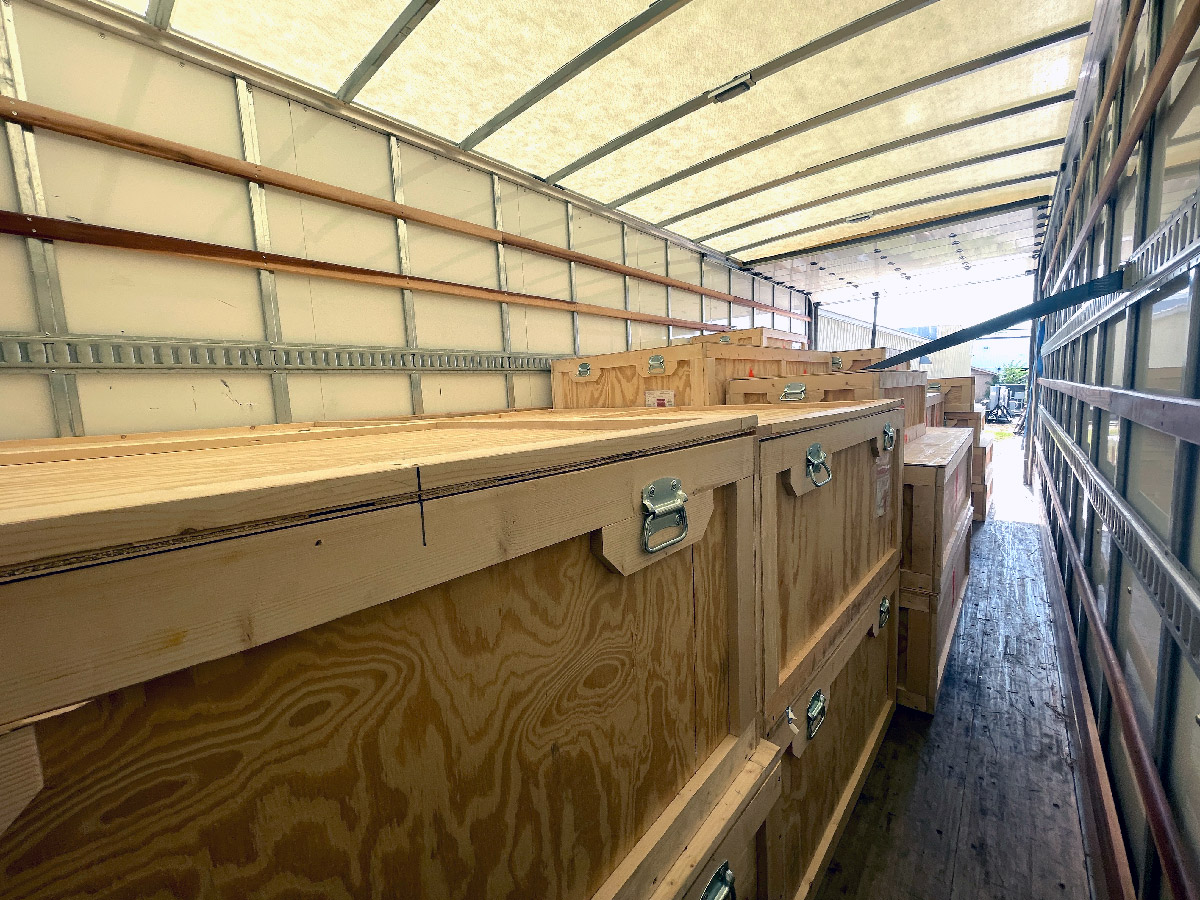“Cam,” Lucian asks, “How many crates are you making today?”
“Two,” I say.
The seven-year-old’s math-mind whirrs. “So,” he continues, “when you finish these you will have 18, right? Then you only need to make… 11 more?”
From mid-summer to early fall, crate making was my avocation and Lucian’s calculations and encouragement proved constant. Sometimes I invited him to help me run the nailer along the edges of precut quarter inch plywood panels, shooting staples into matched lengths of one by three inch pine framing. And so it was that on otherwise quiet evenings and weekends, neighbors endured the whine of my table saw and the rap, tap, rap of my nail gun as pairs and trios of plywood boxes spilled from my garage studio into the driveway.
More than a few passersby paused to ask, “What are you making?”
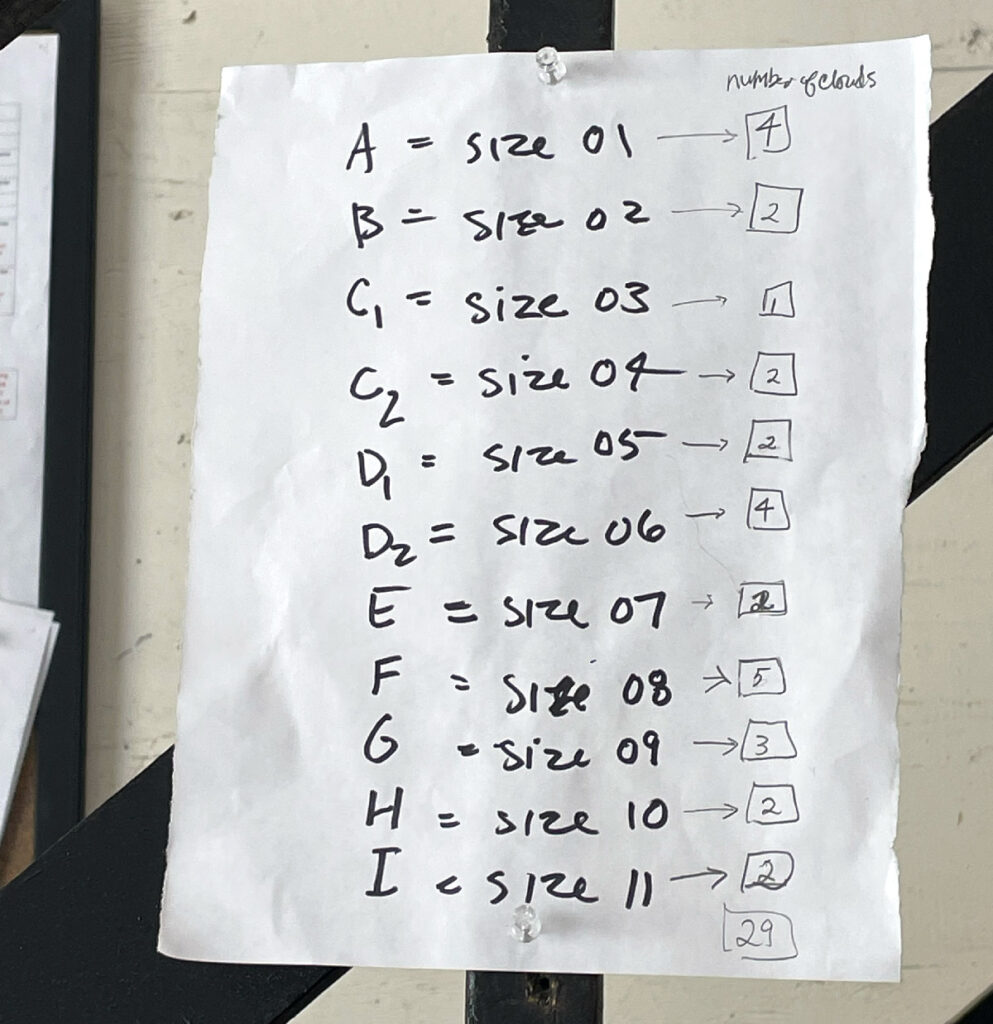
“Shipping crates. 29 of them. For my artist friend, Leslie Iwai,” I’d explain. Most seemed interested enough to hear the longer answer. “Leslie was awarded a grant from Nebraska’s 1% for Art Program to design a permanent art installation for the new library at the University of Nebraska-Kearney. Her piece—a large scale mobile titled Cumulate—consists of 29 metal clouds. It’s my job to construct a custom crate for each one.”
“Wow, a ton of work!”
Having paused from my labor, I felt ready to enlarge the story. And what a fantastical tale I was telling! A story about polychromed clouds that would hang in space like a Calder mobile; how .04 inch aluminum sheets trimmed into biomorphic shapes by were being riveted together; how each cloud will contain lines of poetry spelled out in Morse Code by a water jet cutter; and how Matt Mason, Nebraska’s poet laureate, curated the nine poets whose words appear in this installation.
While shipping crates were but one item on Cumulate’s extensive project checklist, material requirements for the crates alone underscore the broad scope of Leslie’s endeavor:
5,000 ¼ x ¾ inch staples
1,668 linear feet of 1 x 3 inch pine
700 #6 coarse thread 2 inch zinc plated Phillips screws
72 zinc plated 4 inch crate handles
52 sheets of ¼ inch x 4 x 8 foot BCX plywood
8 80-grit sanding belts, 3 x 18 inches
2 cans of Rust-Oleum fluorescent orange spray paint
1 gallon Titebond wood glue
I delivered the last pair of crates to Leslie’s studio on September 11 and she and her assistant, Calvin, readied everything for the mover’s arrival the next morning. They made quick work of loading the 2,750 pounds of art cargo into a 26 foot Penske truck. Crates strapped securely into place, the drivers headed from Madison, Wisconsin for the ten or so hour drive to the Calvin T. Ryan library. Cumulate was unpacked, its crates disassembled, and clouds and clusters of fine-tuned hardware staged for installation. The next day, installers guided 27- and 45-foot scissor lifts into the atrium. Leslie’s crew pieced the puzzle together and the installers hoisted it to waiting white steel beams two stories above. Hardware snapped into place and Leslie’s engineered armatures balanced perfectly. A flawless installation. Cumulate is poetry in the clouds and as the library’s HVAC system circulates air, the installation is in constant, barely perceptible, motion.
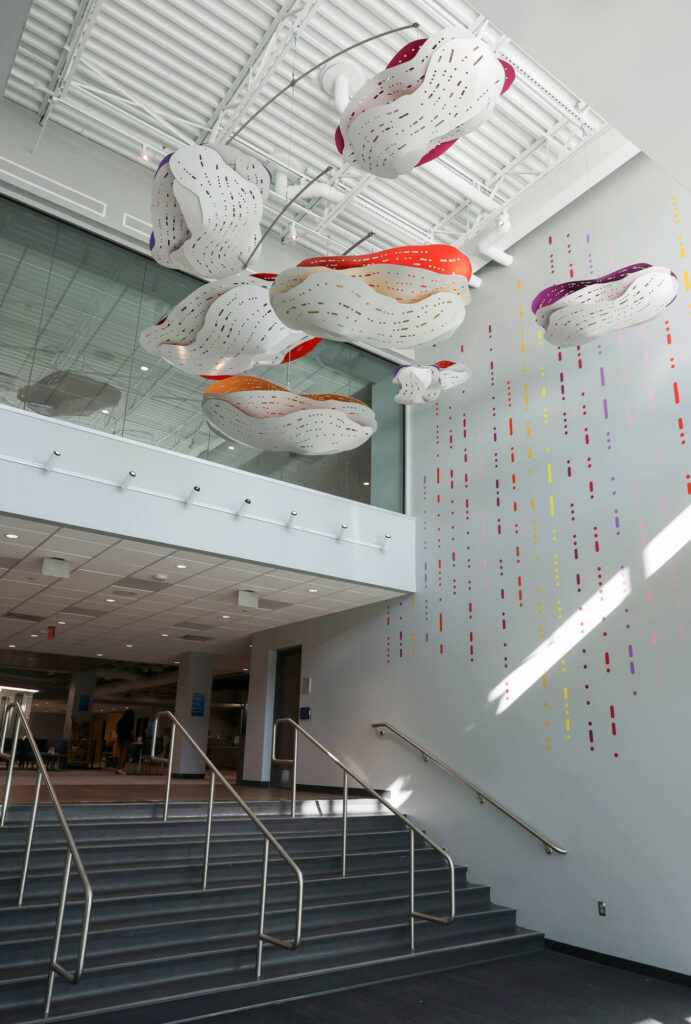
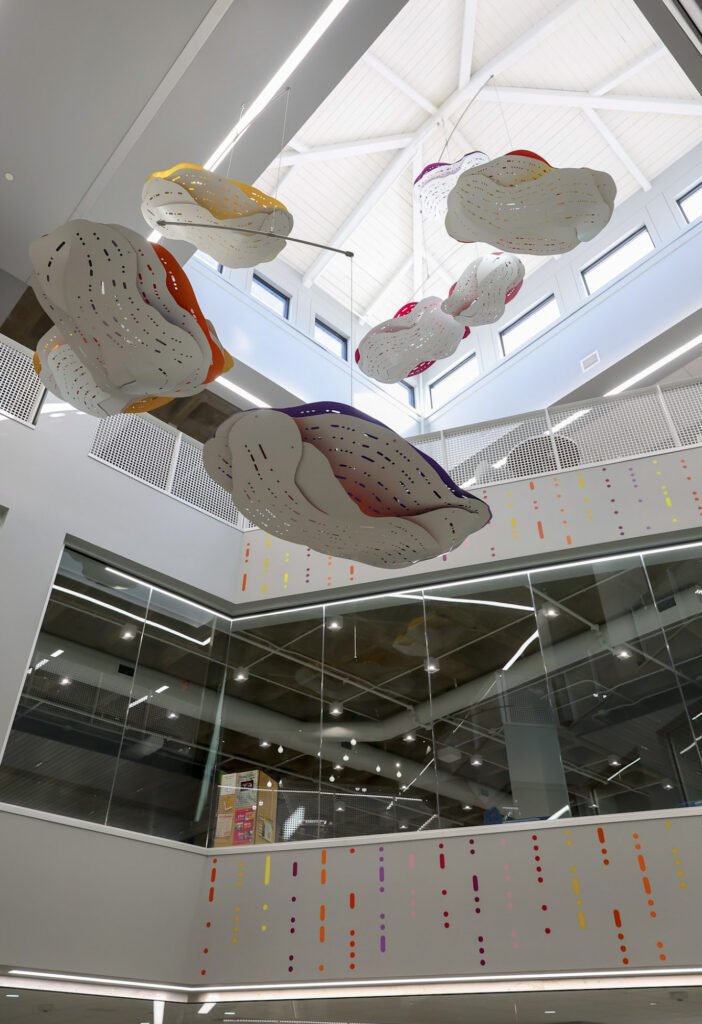
In our late-modern world, romantic ideas about artmaking persist. We imagine free verse poems being written, melodies, harmonies, and rhythms charted, façades designed, and prints pulled as mostly solitary pursuits. Sometimes our calling summons bright innovation, sometimes it stirs darker currents. A romantic myself, it is important to acknowledge that this view often harbors two shortfalls: intolerable self-indulgence and a failure to understand how art actually enters and then inhabits the world.
When artists like Leslie work in large scale formats, ideas birthed in regular studio practice require them to become managing entrepreneurs. The lone-ranger creative must now punch above her weight. As inventor, editor, designer, dealmaker, project manager, and bookkeeper, she must multitask. The pleasures and challenges of making will continue, but the scale and complexity of the new work will require more grit, problem solving, and skilled collaboration. In the end, Leslie must make good art, satisfy client expectations, and generate personal income. For an independent artist, the stakes could not be higher.
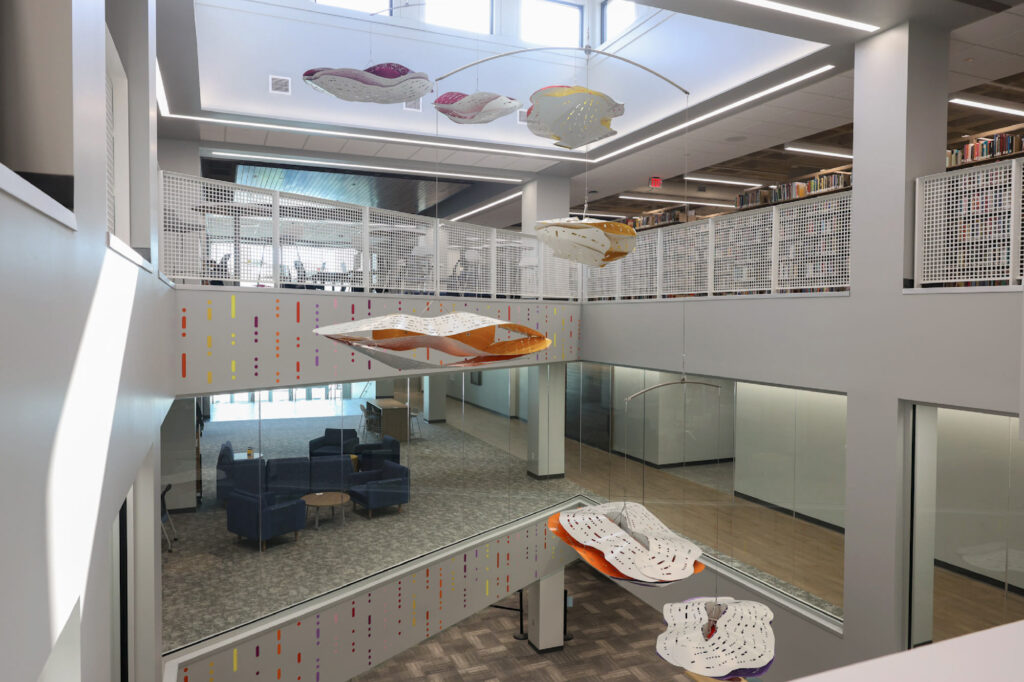
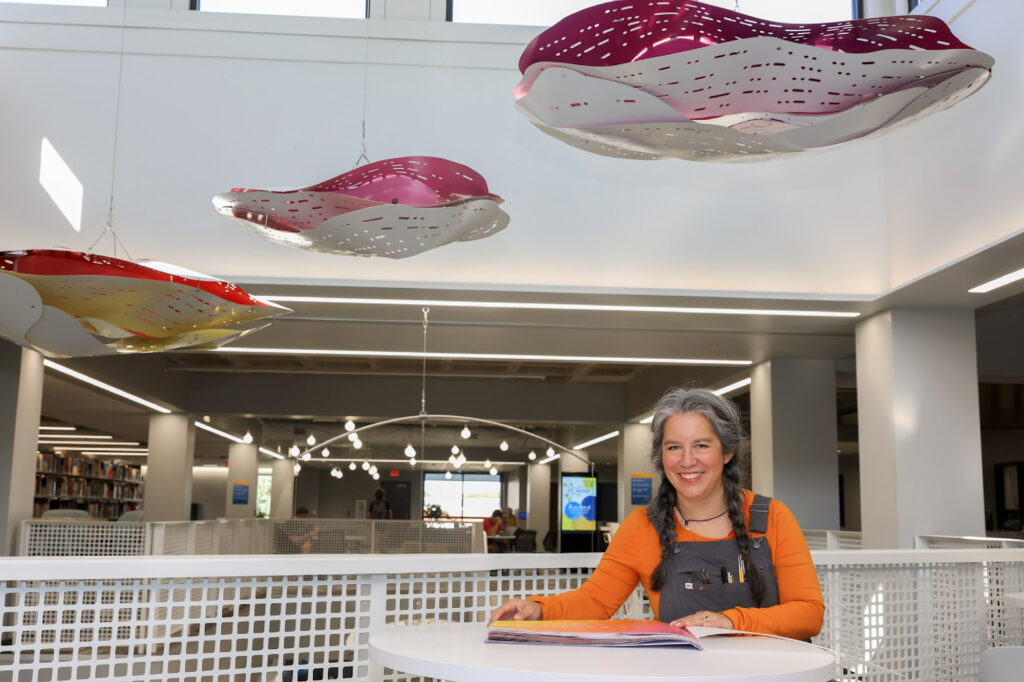
It is all the fashion to speak of fragmentation—disconnected memories, biased knowledge, and truncated experiences. Perhaps we are inclined to this because life seems to proceed in fits and starts, as a kind of unraveling, entropy. But Iwai has proposed something different. Do you see it?
Made of minerals, fashioned by fire and water, and suspended in the air above, the terrestrial becomes celestial. Theories about the nature of reality articulated by the fourth-century Greek philosopher Aristotle gain a modern form. Cumulate celebrates art’s potential to profess. We witness material studio labors giving rise to something entirely new. When an active artist mind is paired with steady handwork, a stitching together occurs. Cumulate is a conjoining of words, forms, ideas, and spirit. It is a convergence of diverse languages—American Morse Code, Braille, poet voices, and the visual language of form. It features multivalent panels outfitted in a palette of colors inspired by spectacular prairie sunsets. Suspended in the Ryan library—a literal house of words—cumulus clouds cluster in the long Nebraska sky.
Behind a shelterbelt of cedars,
top-deep in hollyhocks, pollen and bees,
a pickup kicks its fenders off
and settles back to read the clouds.[1]
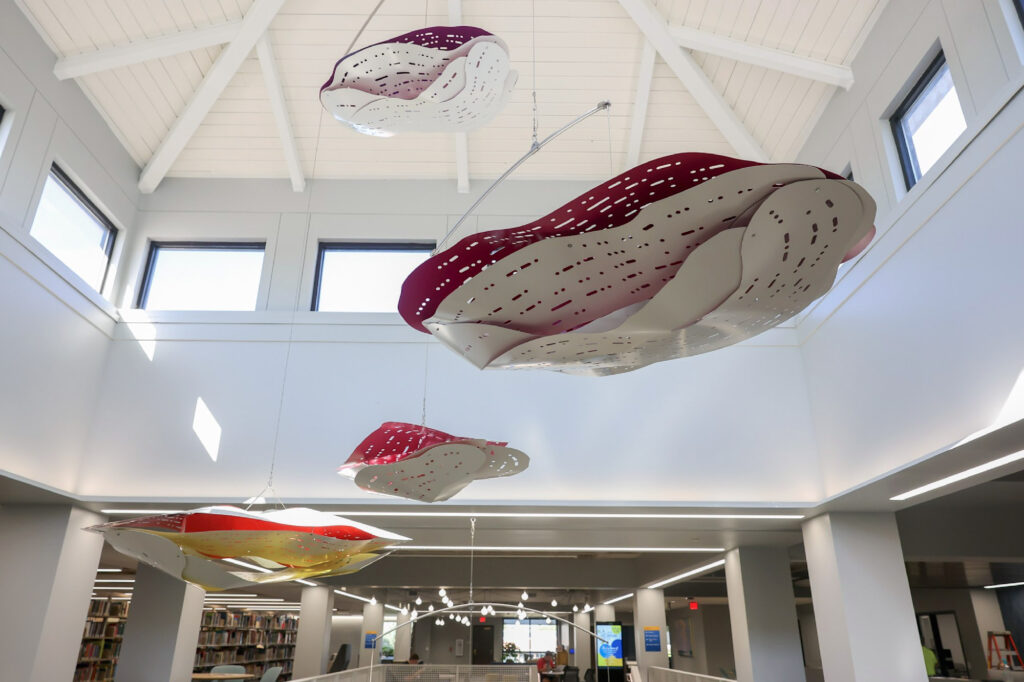
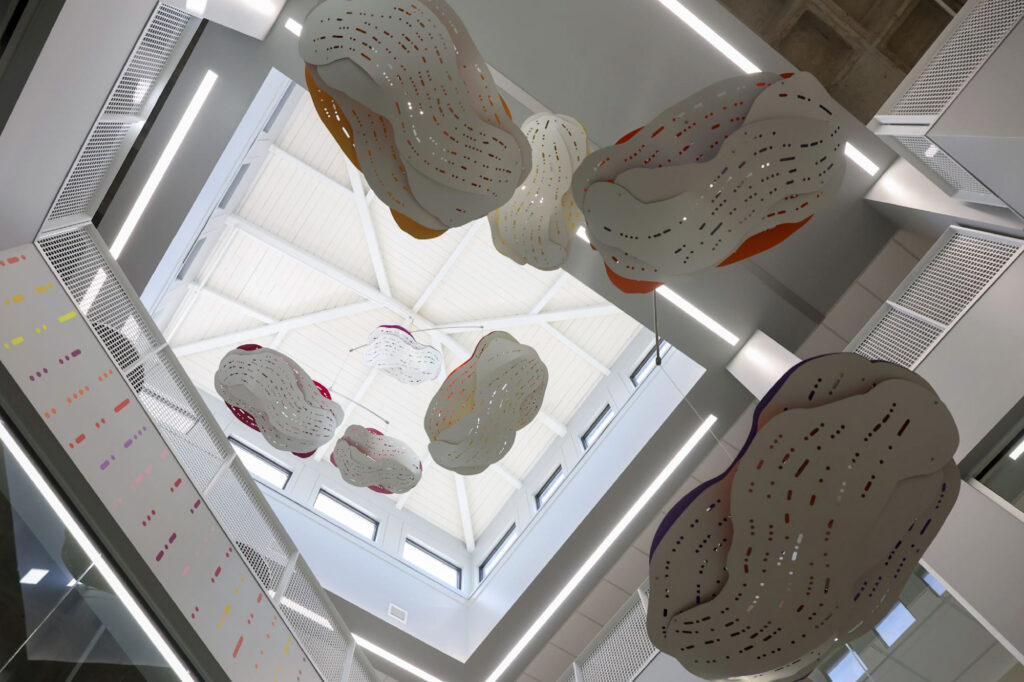
Cumulate invites us to look up, it is a transcendent enactment that operates in actual time and space. I hope this new installation will provoke students, staff, and faculty who filter through the library’s atrium to forsake, for a moment, their pixelated screens and behold the polychromed aluminum clouds freighted with fragments of Nebraska poetry and suspended in the aether.
Leslie was for 29 years a daughter of Nebraska. She is, in the best of ways, an art diva and Cumulate is a personal tour de force midway in an unfolding and brilliant career.
Notes:
[1] From Ted Kooser, “So This is Nebraska” (1980).
Above photos of Cumulate are from Nebraska 1% for Public Art.

